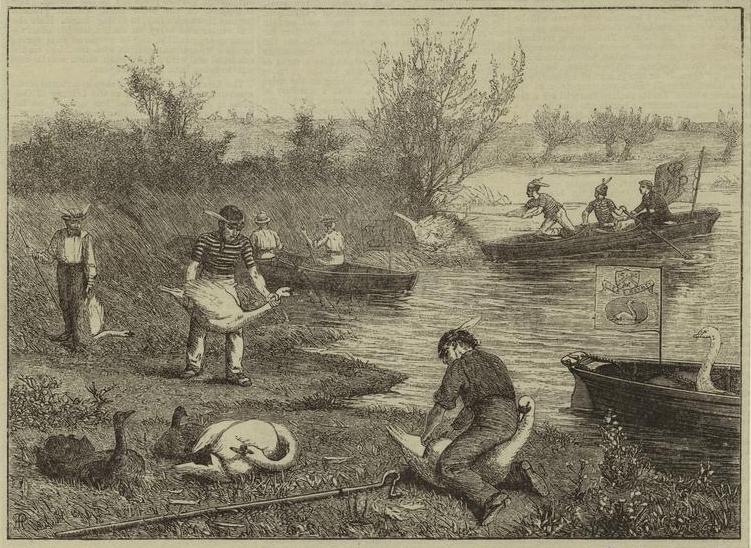Pinioning on:
[Wikipedia]
[Google]
[Amazon]
 Pinioning is the act of surgically removing one pinion
Pinioning is the act of surgically removing one pinion
 Pinioning is the act of surgically removing one pinion
Pinioning is the act of surgically removing one pinion joint
A joint or articulation (or articular surface) is the connection made between bones, ossicles, or other hard structures in the body which link an animal's skeletal system into a functional whole.Saladin, Ken. Anatomy & Physiology. 7th ed. McGraw- ...
, the joint of a bird
Birds are a group of warm-blooded vertebrates constituting the class Aves (), characterised by feathers, toothless beaked jaws, the laying of hard-shelled eggs, a high metabolic rate, a four-chambered heart, and a strong yet lightweig ...
's wing
A wing is a type of fin that produces lift while moving through air or some other fluid. Accordingly, wings have streamlined cross-sections that are subject to aerodynamic forces and act as airfoils. A wing's aerodynamic efficiency is e ...
farthest from the body, to prevent flight. Pinioning is often done to waterfowl and poultry. It is not typically done to companion bird species such as parrots. This practice is unnecessary and restricted in many countries.
Procedure
Removing the pinion joint of a bird stops the growth of theprimary feathers
Flight feathers (''Pennae volatus'') are the long, stiff, asymmetrically shaped, but symmetrically paired pennaceous feathers on the wings or tail of a bird; those on the wings are called remiges (), singular remex (), while those on the tai ...
, preventing the acceleration required for flight and is analogous to amputating a human hand at the wrist. Pinioning may be done by a veterinarian or by a trained breeder, depending on the country in which the keeper is operating. For example, it is illegal for anyone other than a veterinarian to carry out the procedure in the United Kingdom. It is similar to other forms of modification and surgical procedures of domestically raised animals, such as docking the tail of a dog
The dog (''Canis familiaris'' or ''Canis lupus familiaris'') is a domesticated descendant of the wolf. Also called the domestic dog, it is derived from the extinct Pleistocene wolf, and the modern wolf is the dog's nearest living relative. Do ...
and declawing on a cat
The cat (''Felis catus'') is a domestic species of small carnivorous mammal. It is the only domesticated species in the family Felidae and is commonly referred to as the domestic cat or house cat to distinguish it from the wild members of ...
.
Apart from the prevention of flight, there is commonly thought to be little long term negative effect from pinioning if performed correctly and at a young age. However, the animal welfare impact of pinioning is subject to increasing debate. For example, it is now known that the operation, which is often performed without pain relief, is just as painful in young birds as in mature birds, if not more so. Evidence also suggests that pinioning may cause a phantom limb
A phantom limb is the sensation that an amputated or missing limb is still attached. Approximately 80 to 100% of individuals with an amputation experience sensations in their amputated limb. However, only a small percentage will experience pain ...
syndrome similar to what is observed in human amputees
Amputation is the removal of a limb by trauma, medical illness, or surgery. As a surgical measure, it is used to control pain or a disease process in the affected limb, such as malignancy or gangrene. In some cases, it is carried out on indivi ...
. For these reasons this practice has been prohibited in certain regions and is subject to increasing scrutiny.
Alternatives to pinioning
A non-surgical alternative is clipping the flight feathers. This only lasts until feathers are replaced during themoult
In biology, moulting (British English), or molting (American English), also known as sloughing, shedding, or in many invertebrates, ecdysis, is the manner in which an animal routinely casts off a part of its body (often, but not always, an outer ...
; however, the flight feathers are only replaced once or twice a year, depending on the species. Unfortunately, the process of capturing and clipping can cause considerable distress to birds.
Permanent enclosures designed to prevent accidental egress (escape) of birds remove the need for pinioning.
Keeping birds who through natural adaptation or selective breeding have lost the ability to fly removes the need for pinioning; for example, keeping Indian runner ducks as opposed to wild-type
The wild type (WT) is the phenotype of the typical form of a species as it occurs in nature. Originally, the wild type was conceptualized as a product of the standard "normal" allele at a locus, in contrast to that produced by a non-standard, "m ...
mallard ducks.
Legal status
Pinioning is legally restricted in many countries. In England, if the bird is more than 10 days old its pinioning may only be performed using anaesthetic and, regardless of the bird's age, the procedure is illegal unless performed by aveterinarian
A veterinarian (vet), also known as a veterinary surgeon or veterinary physician, is a medical professional who practices veterinary medicine. They manage a wide range of health conditions and injuries in non-human animals. Along with this, vet ...
. It is also illegal to perform on farmed birds. In Austria pinioning is prohibited based on §5 (Prohibition of cruelty to animals) and §7 (Prohibited interventions performed on animals) of the Animal Protection Act.
{{cite web, url=https://www.ris.bka.gv.at/Dokument.wxe?Abfrage=Erv&Dokumentnummer=ERV_2004_1_118, title = Federal Act on the Protection of Animals (Austria) 12 August 2014
References